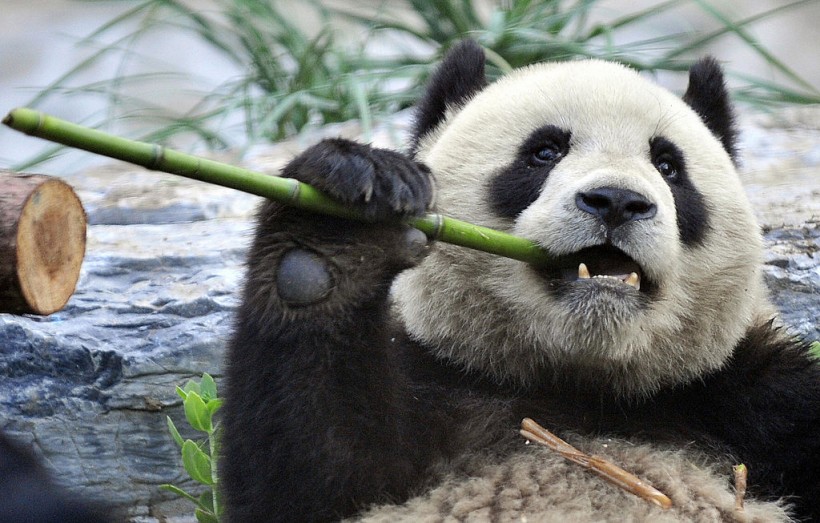Detecting panda fossils in China has helped scientists solve the mystery of how the gigantic species developed a so-called "false thumb" and turned out to be the lone dedicated vegetarian in the family of bears.
As specified in a Phys.org report, fossils that date back approximately six million years discovered in Yunnan province in southwest China included a greatly enlarged wrist bone known as a radial sesamoid.
In a new study, scientists said it is the oldest known evidence of the modern giant panda's false thumb that enables it to trip and break heavy bamboo stems,
The fossils belong to the now-extinct prehistoric relative of the panda known as Ailurarcto, which lived in China between six and eight million years ago.
ALSO READ: [WATCH]: Wild Pandas Courtship and Mating Filmed For the First Time

A hungry giant panda tears a bamboo stick at a Beijing zoo.
Panda Fossils
According to the curator of vertebrate paleontology Wang Xiaoming at the Natural History Museum of Los Angeles County, the giant panda is an unusual case of a giant carnivore with a short, carnivorous digestive tract that becomes a dedicated herbivore.
The curator added that the false thumb in Ailuractor illustrates, for the first time, the likely timing, as well as the steps in the bamboo feeding's evolution in pandas.
Researchers of the new study published in Scientific Reports had known about the panda's false thumb, which works akin to a human thumb, for approximately a hundred years.
However, the lack of fossil evidence had left unanswered questions about how and when the extra digit was not visible in any other bear species-evolved.
45 Kilos of Bamboo for Up to 15 Hours Each Day
The false thumb of the giant panda is not the most dexterous or elegant, but even a tiny, protruding lump at the wrist can be a modest benefit in stopping bamboo from sipping off bent fingers, explained Wang.
The fossils discovered close to Zhaotong city in the north of Yunnan comprised a false numb longer than that discovered in modern pandas, although without an inward hook on the end.
The hook and a fleshy pad surrounding the base of the thumb evolved since it needed to bear the burden of substantial body weight.
Pandas traded the high-protein, omnivorous diet of their predecessors for bamboo, that's low in nutrients available year-round, in South China millions of years back.
#NSTworld The discovery of #panda #fossils in #China has helped researchers solve the mystery of how the giant species developed a "false thumb" and became the only dedicated #vegetarian in the #bear family.https://t.co/obbFm8JIz0
— New Straits Times (@NST_Online) July 3, 2022
A similar New Strait Times report said they are eating for up to 15 hours every day, and an adult panda can eat 45 kilograms of bamboo each. While their diet is mostly vegetarian, wild pandas are famous for occasionally hunting animals.
A report about the panda being vegetarian is shown on Mr. Zero Water's YouTube video below:
RELATED ARTICLE: Pandas Like Poop Rolling and Scientists Say They Know Why
Check out more news and information on Giant Pandas in Science Times.














